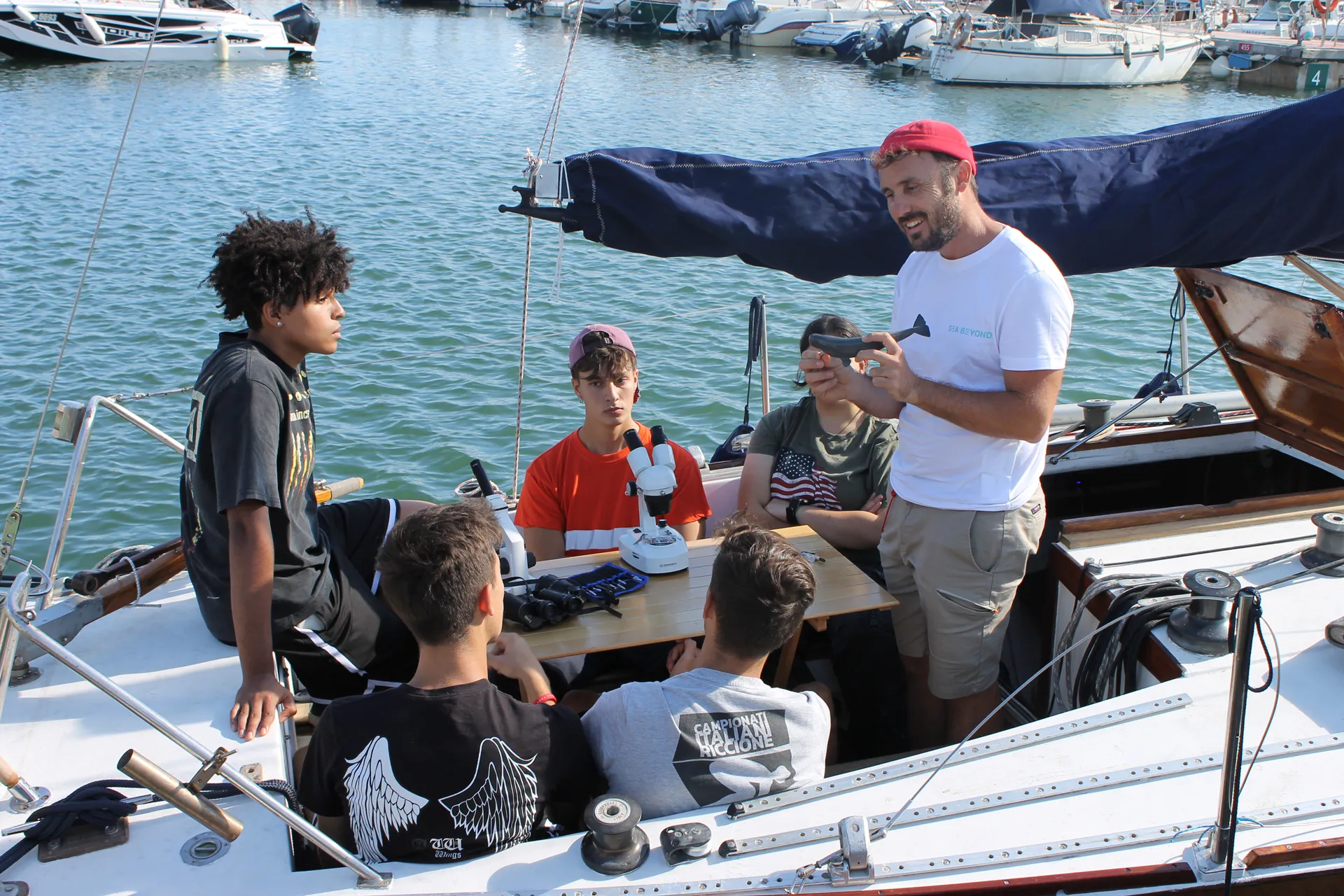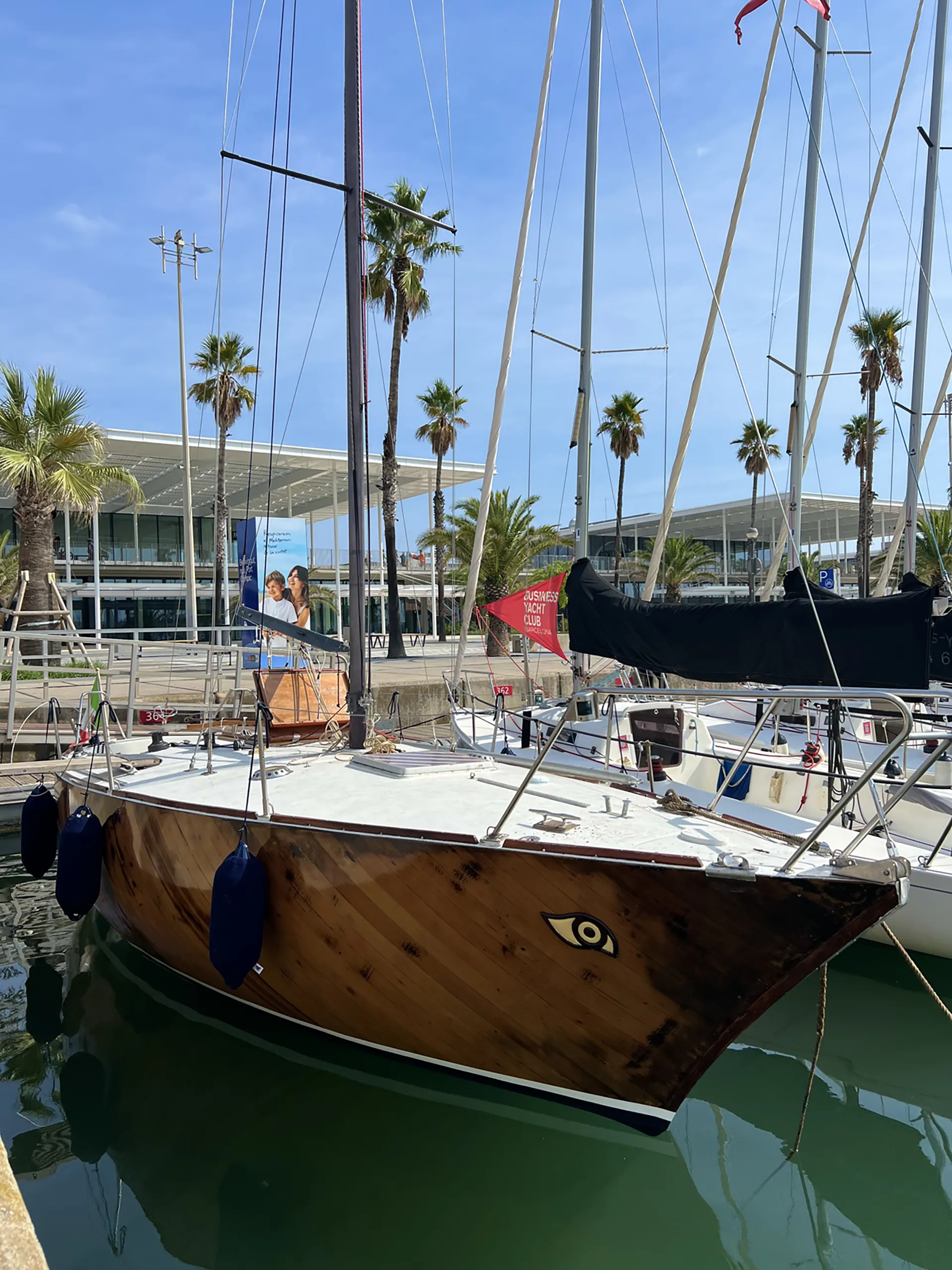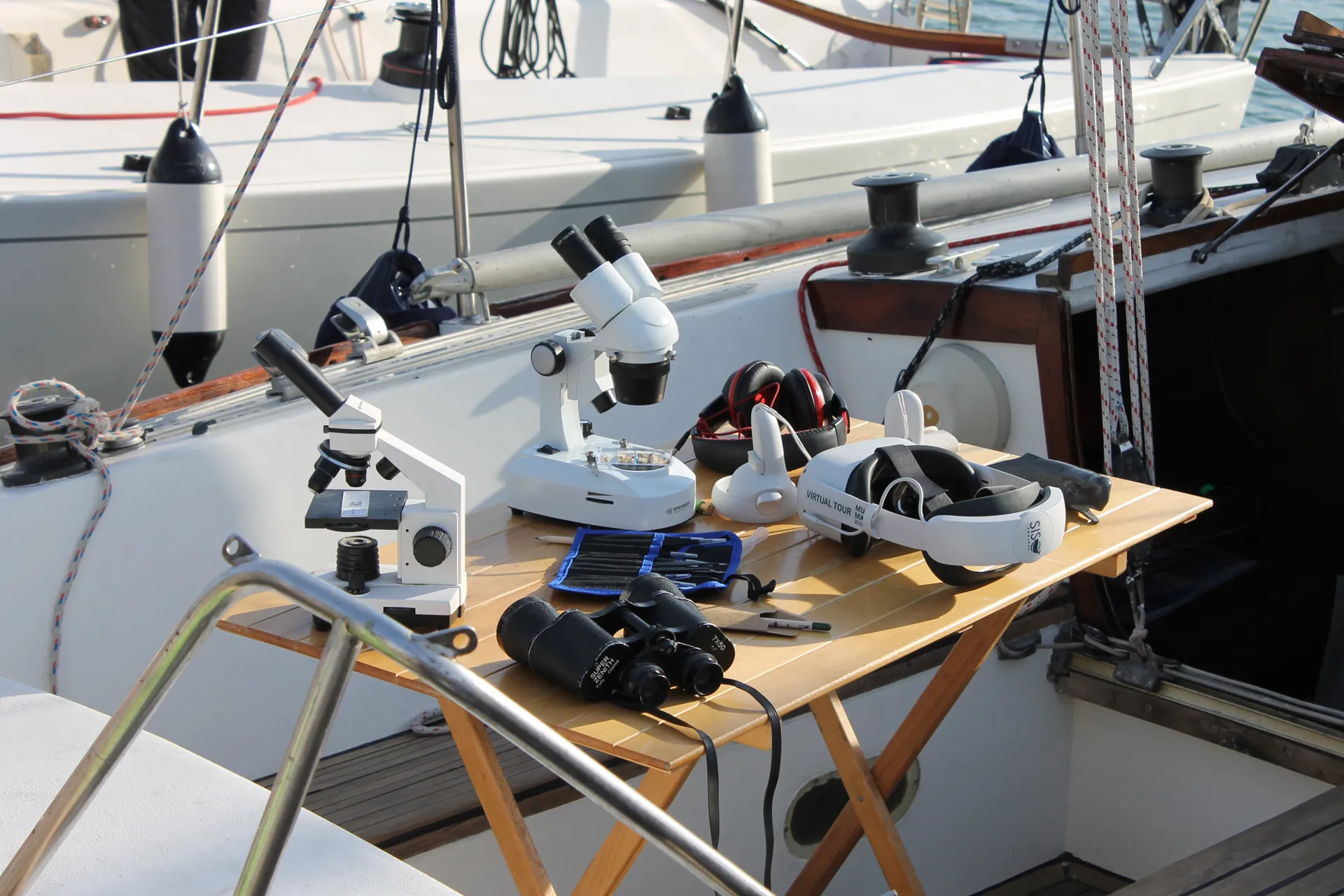The Project
The idea is to give new life to the boat and after having completely restored it, make it “green” and “eco-sustainable”. The boat will exploit renewable energy : the wind thanks to its sails and the wind generator , the sea currents thanks to the hydrogenerator and the sun thanks to the solar panels . The energy obtained will be used to operate the electric motor that will be used for movements in ports. A small desalination plant will produce water without consuming disposable plastic bottles. The crew’s food self-sufficiency will be possible thanks to the “hydroponic” cultivation of vegetables . The food will be cooked using an electric induction stove . No fossil fuels will be used on board the vessel .

1
Dissemination
In addition to the " project presentation video " (which will be released before departure) and the " Final story documentary " which will be released at the end of the project, throughout the journey, on board, biologists and scholars will be able to produce countless contents for dissemination on social media and on TV. Thanks to the collaboration with documentary makers, documentaries will be produced that tell the beauty and fragility of the Mediterranean seabed. Particular attention will be given to the education of new generations and for this reason many meetings will take place in schools in the locations where the boat will land. The kids will also be involved on board with "field" biology lessons (freediving and snorkeling) and sailing lessons. The students will have the opportunity to become "scientists for a day" through " citizen science".

2
Protection
In the various places where it will land, beach clean -ups will be organized, as well as recovery of ghost nets and other abandoned fishing gear “ in nylon” (which will then be sent to a company to transform them, giving them a new life). All in collaboration with the locals and their representatives who deal with environmental protection who will be interviewed. This point is closely connected to the first because through dissemination people learn to love and therefore protect the sea and the natural environment.

3
Exploration and Research
A portable “compressor for recharging cylinders” on board will allow the cylinders to always be charged and ready for exploration of the seabed and scuba diving. The boat will be equipped with modern oceanographic research instruments: a microscope , a stereoscope, two binoculars (for sightings), a hydrophone (for research and study of cetaceans), environmental monitoring sensors to collect data (salinity, surface temperature, wave motion, etc.), the possibility of taking and storing seawater samples, a net to capture plastics, an aerial drone for environmental monitoring , an underwater drone (which will allow the seabed to be explored and observed) and other instruments that will allow monitoring and studies on marine environments. Thanks to the ongoing collaboration of the Museum with numerous institutions, universities and associations , it will be possible to carry out “research campaigns” and host scientists and instruments on board for what will become a “ small floating laboratory ”. Particular attention will be given to research related to the human impact on the environment: plastics, microplastics , etc. The boat will be available for experts who want to do research .